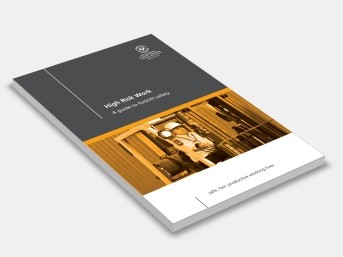High Risk Work: A guide to forklift safety
SafeWork SA
The human and financial cost of forklift-related incidents for workers, industry and the community is substantial. However incidents can be prevented, especially when workers and Persons Conducting a Business or Undertaking (PCBUs) work together to improve health and safety outcomes at work.
This publication offers practical guidance for both businesses and workers on managing risks related to forklifts. It focuses on simple safety practices and the involvement of everyone in the workplace to help reduce the risk of forklift-related injuries, covering:
• the responsibilities of PCBUs, workers and others
• physical hazards and safety issues related to forklifts e.g. instability, body strain
• practical and safe ways to operate forklifts e.g. carrying loads, maintaining the forklift
• supporting workplace systems e.g. traffic management plans, incident reporting
This guide is not intended to cover all duty holders’ responsibilities or hazards and risks associated with industrial lift trucks. Where container forklifts are used, such as in shipping yards and freight terminals, additional risks exist that are not specifically covered.
Contents:
Forklift Dangers
Safe Practices
Legal Responsibilites
Training And Qualifications
Consultation
Selecting A Forklift
Physical Hazards And Safety Issues
Operation And Maintenance
Supporting Systems
Further Information
